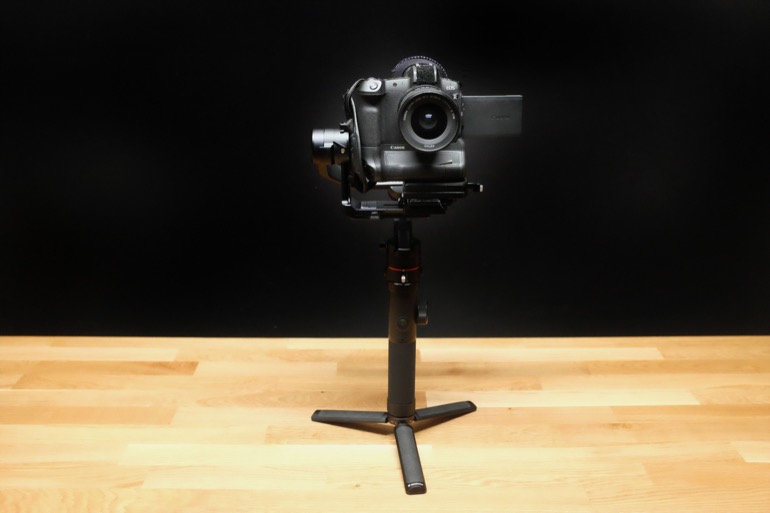Manfrotto Gimbal 460 Kit Review
The world of camera gimbals has changed rapidly over the years, from the original Freefly MOVI in 2013, to an assortment of two-handed gimbals from companies like Zhiyun, Letus, Feiyu, Pilotfly, DJI, and others. And now, apart from high end gimbals that are built for major productions, we’ve pretty much hit a plateau with prosumer gimbals. The 1-handed 3-axis gimbal is here to stay, and they all look fairly identical.
So in 2021 Manfrotto has entered the camera gimbal world with two kits - the MVG 220 and the MVG 460 - and in this review I’m looking at the 460.
So where does the new Manfrotto gimbal fit in? How does it stack up to the competition? Is it even worth considering a Manfrotto gimbal, when Zhiyun has had years to refine the Crane and Weebill gimbals, and DJI offers a nearly perfect iteration of the 1-handed gimbal in a variety of Ronin sizes?
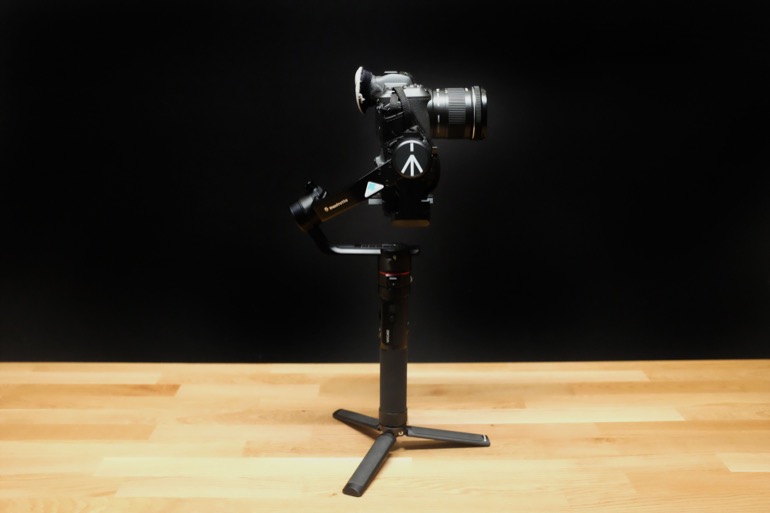
First let me just say I absolutely love Manfrotto products. Their tripods and fluid heads are excellent for the price, I’ve used the Nano Stand light stands exclusively for a decade in the field, as well as a few Manfrotto video monopods, and the Manfrotto 394 quick release plate is the lifeblood of all my productions.
Manfrotto’s sister company Gitzo makes incredible travel tripods and I’ve thrashed two of them across the country and throughout the harshest conditions in Alaska for years and years and they still look and function like they were brand new.
With that said, let’s look at the Manfrotto 460 gimbal.
Manfrotto 460 Gimbal Review
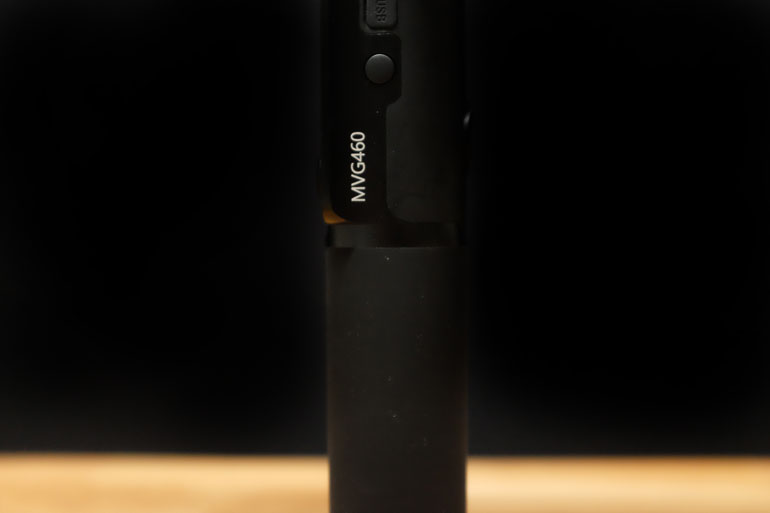
So like I said Manfrotto has actually has two models in their gimbal stabilizer lineup, the MVG220 which supports cameras up to 4.85 pounds, and the MVG 460 which can handle up to 10.1 pounds.
That’s quite a bit more than the similarly priced DJI RSC2, for example, which has a payload of 6.6 pounds. In fact it’s more akin to the DJI RS2 which has a payload of 10 pounds but is twice the cost of the Manfrotto 460. So theoretically you could use cameras like the Canon C70 or C200, Sony FX6, or beefy mirrorless cameras like the Panasonic S1H or Canon 1DX on this gimbal.
But if you’ve attempted to balance an especially tall or wide camera on a one-handed gimbal before, you’ll know by now that the real limitation is having enough physical space to properly balance a larger camera.

In my case I like to use a Canon EOS R with a battery grip on it full time, along with a Vello hand strap. In the past I’ve also used a 1DX Mark II as a gimbal cam, and the height has always been an issue with 1 handed gimbals. So will the Manfrotto 460 be able to handle this setup? Let’s give it a shot.
First, Manfrotto provides a standard foam carrying case with perfectly cut spaces for the gimbal and its accessories. The thing is with any gimbal that comes in a case like this, it’s certainly nice for storage but realistically you can pretty much toss the case or put it away, because as soon as you balance your camera on the gimbal, you’ll want to keep it balanced.
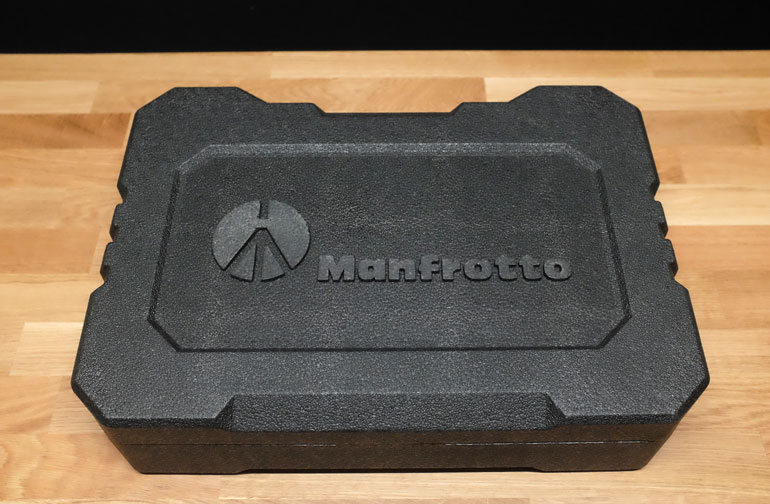
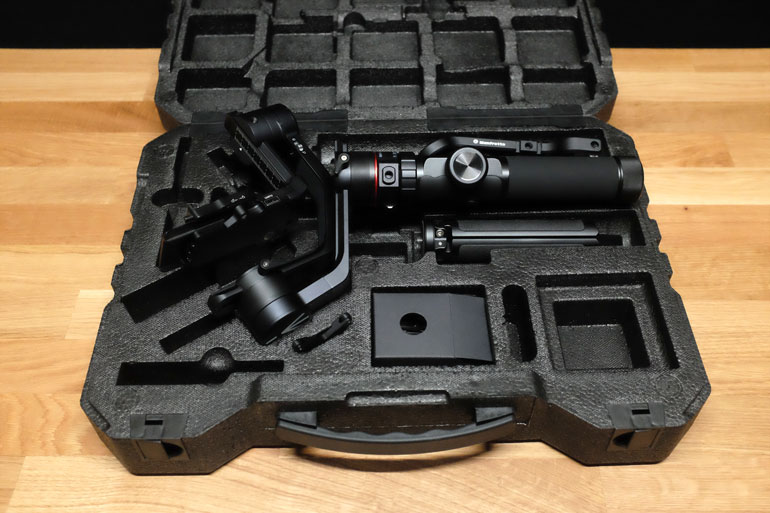
But you won’t be able to fit the gimbal back in its case without collapsing all the axis back into their compact form, undoing all your balancing work in the process. So, you’ll want to use another case or wrap it up with some neoprene like a Domke Wrap before placing it in your production bag.
Manfrotto 460 Gimbal Quick Release Plate
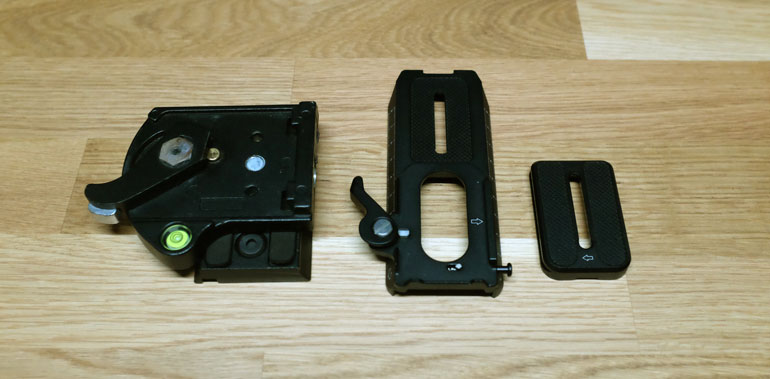
The second thing that’s common with pretty much all these gimbals is the quick release plate that you have to use on the gimbal. If you don’t already have a quick release system, and if you only use your camera primarily on the gimbal, then you can slap the included top plate onto the bottom of your camera and you’re good to go. With the Manfrotto 460, you get an Arca-Swiss QR plate, so if that’s what you use, then you’re golden.
But for those of us who use any other QR system, like in my case I’ve got the Manfrotto 394 on all my gear, then you will have to attach that on top of the gimbal QR plate, making the camera even higher. Luckily with the Manfrotto 460 gimbal - maybe because it’s a Manfrotto - I found you can actually use a standard Manfrotto 501 plate by sliding it in backwards.
That’s great news if you use Manfrotto 501 plates. For me I have several Manfrotto heads on my video monopods and tripods, and they’ve already got my 394 plate attached to the top of the 501 plate, so using the Manfrotto 460 gimbal fits perfectly in my workflow.
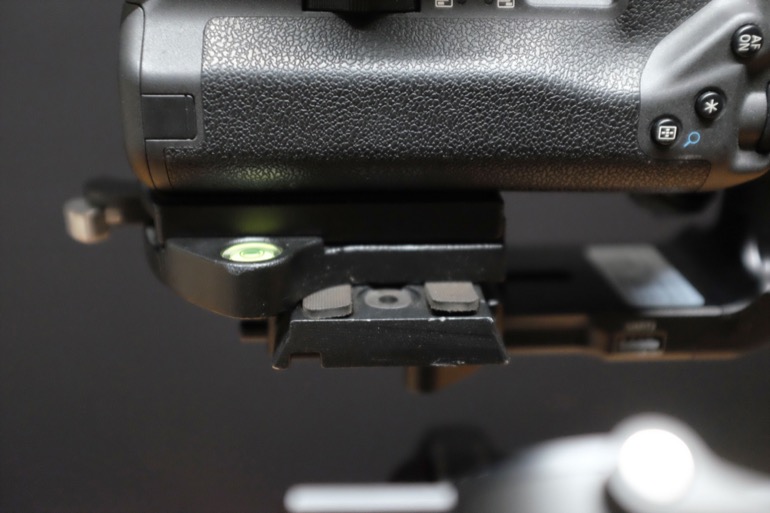
Alright let’s see if we can get this EOS R balanced on the 460 gimbal. I like to read the instructions first, and in this case I also downloaded Manfrotto’s more detailed manual online, just to make sure I don’t miss anything. But if you’ve balanced a camera on a gimbal like this before, you’ll find it’s a breeze.
One thing I really like about this gimbal is all three axis have locks on them. That way you can lock the other two axis while you’re balancing one axis at a time. It makes the process a lot smoother than in all the years I’ve been balancing cameras on other gimbals. The new DJI RS and RSC2 gimbals also feature similar locks, so this is a feature that we can all benefit from.
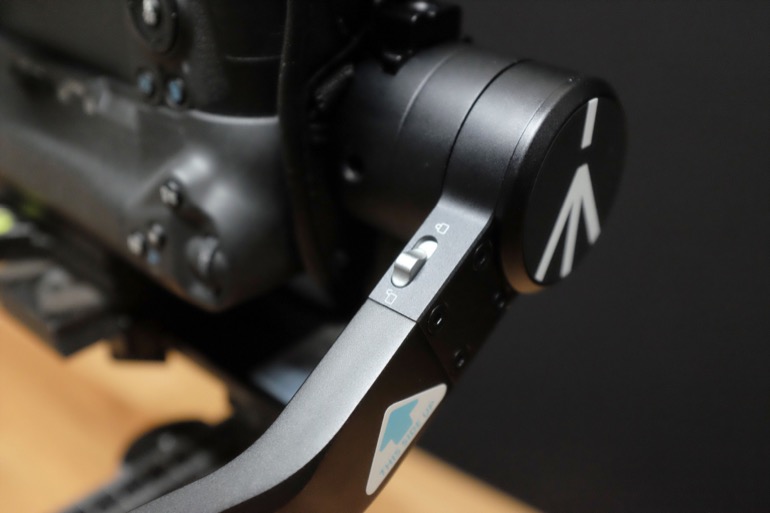
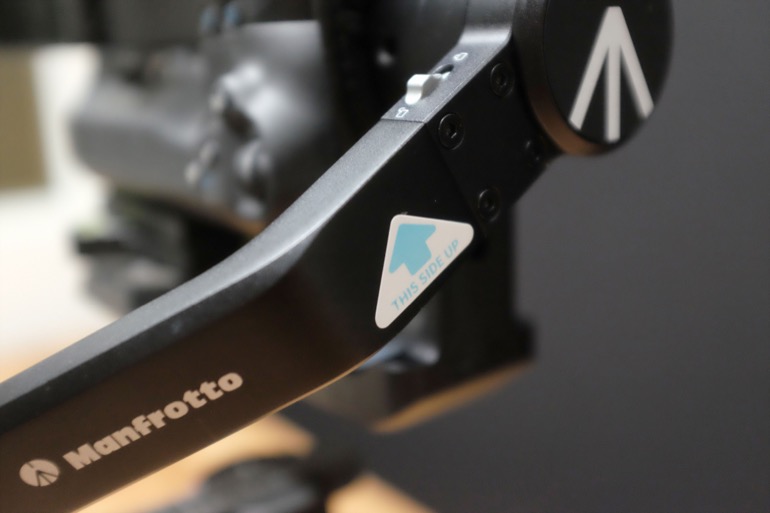
The up arrow is actually pretty helpful when you need to quickly figure out how to assemble the gimbal.
Ok so the EOS R with battery grip, EF-RF adapter, and a little Canon 10-18mm lens is all balanced up on the gimbal, with room to spare. I’m really pleased with that, because I’ve recently balanced this exact setup on the DJI RSC2 and while it fits, it maxes out both the tilt and roll axis completely, leaving no wiggle room for changing to a heavier lens or adding anything to the camera itself.
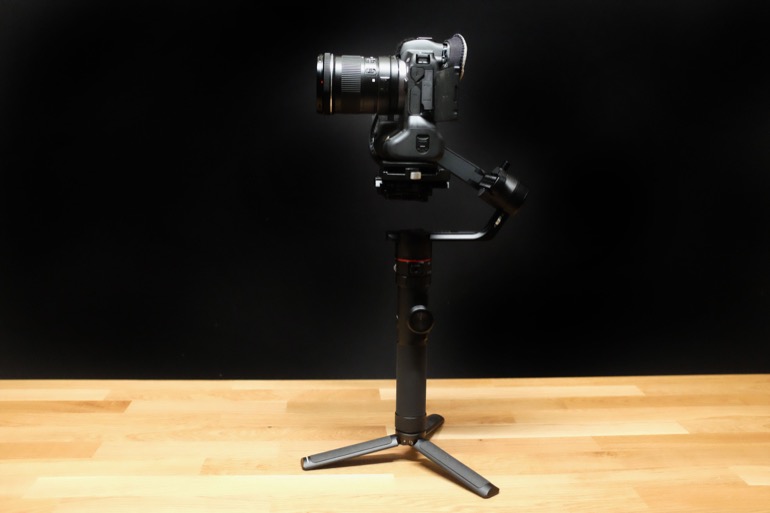
Manfrotto Gimbal 460 and Canon C70
I’m switching cameras here for a minute so you can see another setup here. I’m shooting with the EOS R and I’ve got my Canon C70 here with the same 10-18mm lens on the Manfrotto 460. As you can see it’s balanced and there’s some room to the right of handgrip.

That’s really great to see because I’ve also tried to balance the C70 on the DJI RSC2 and the only way to fit it is to either remove the handstrap, or stretch and bend it out of the way, or add a counterweight. The C70 sits flush with the tilt motor and there’s no more room to adjust in either the tilt or roll motor. Whereas with the 460 gimbal here, I’ve got some more wiggle room on all the axis. Not a lot, but some.
Manfrotto Gimbal 460 Stabilizer Modes
Ok so when you first turn on the gimbal, you can choose from four different modes on the back of the LCD. The default mode is pan-only, which is really nice as you pan around a subject or object. Then there’s Pan Tilt mode which allows you to pan and tilt as you move around, while your roll axis maintains the horizontal level.
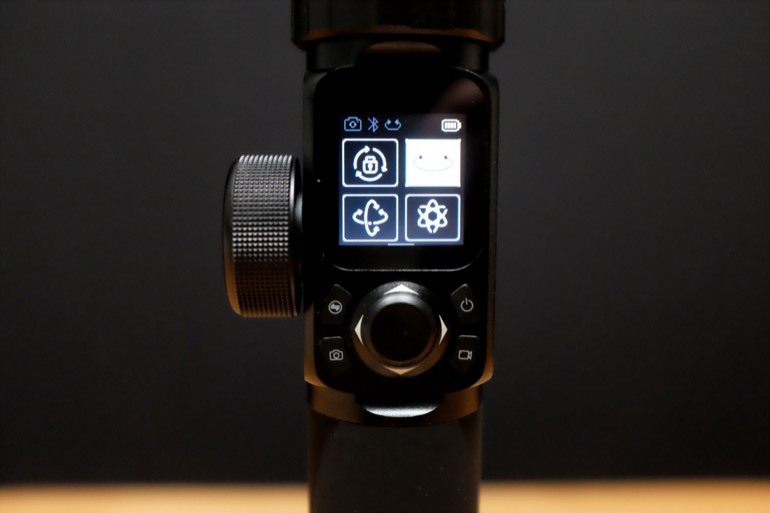
And then there’s the All Axis or FPV mode which is sort of like flying. For the most part, you’ll use Pan or PanTilt modes exclusively, along with the Lock Mode, which locks all the axis and makes it easy to create slow push-in shots, for example, or to simulate a jib as you move the camera up and down while remaining locked on an object.
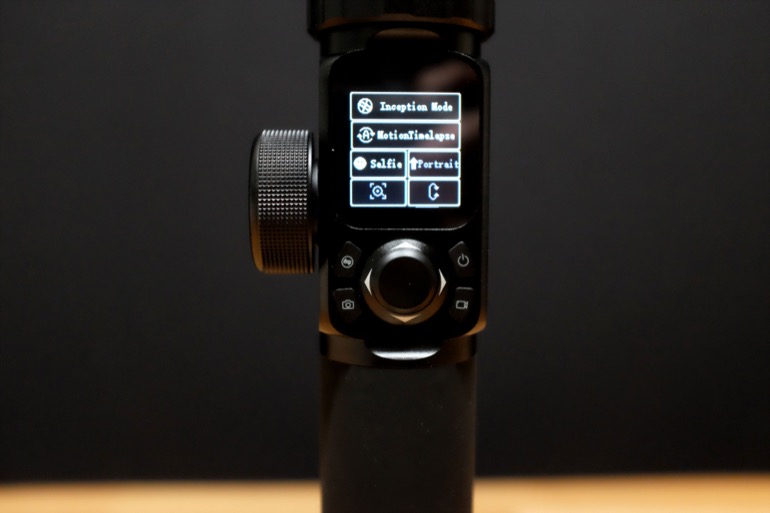
Manfrotto includes a few extras in the gimbal that some shooters may find useful, although I personally don’t really use in documentary and corporate productions. One is the Inception mode, where the whole camera rotates 360 degrees as you push in or out. Another is time-lapse, where you can place the gimbal on a motorized slider and have the gimbal pan or tilt slowly over time.
I personally have never heard of anyone using a gimbal in this way, as there’s way more reliable and cheaper ways to make a motion time-lapse than using a gimbal. And there’s Selfie Mode if you’re a vlogger who happens to also be a bodybuilder and you want the very best cinematic quality for your TikTok videos.
And speaking of, there’s also Portrait mode, which is actually useful if you want to use your nice camera instead of a phone to make TikTok or Instagram Rolls or Stories.
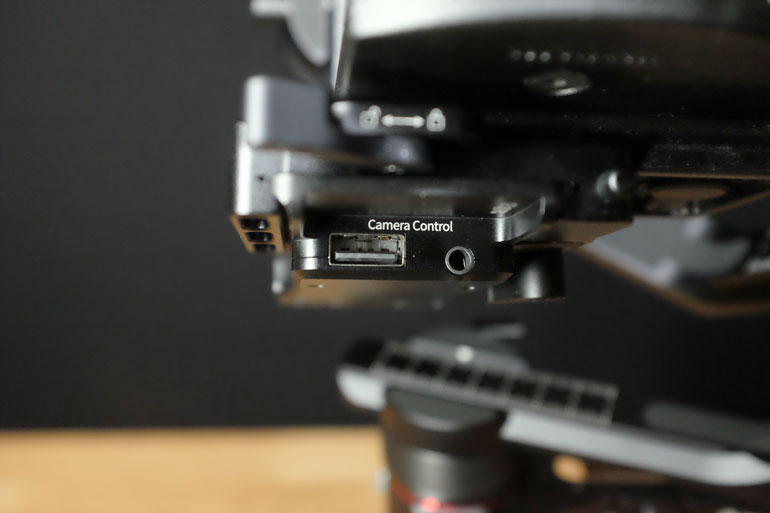
There are also some additional features to help you control your camera using a provided cable. At the basic level that means starting and stopping the recording using the a button on the gimbal. But if you happen to have a compatible camera and lens combo, you could also control the camera’s exposure settings and the lens focus right from the gimbal itself.
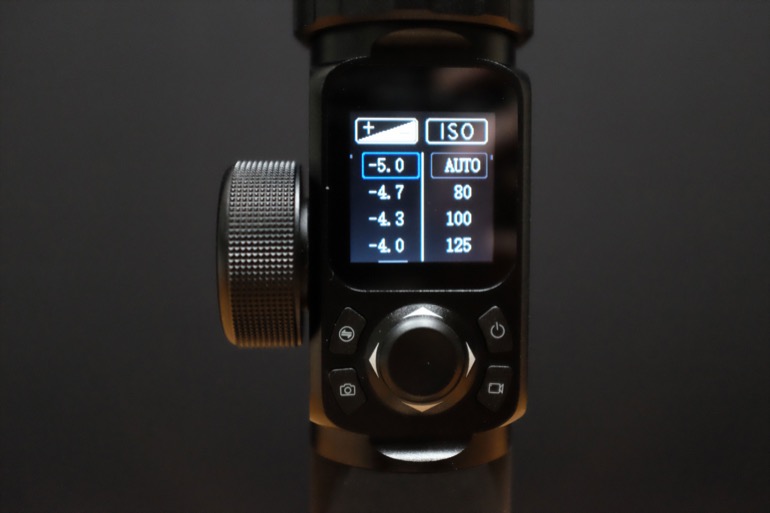
To be honest none of these camera-control features have ever appealed to me with gimbals, since I find that for average shoots you’ll depend on auto focus when using any camera gimbal, and it’s really not that hard to reach up and press the record button.
But if you can get the gimbal to control your camera’s exposure settings then I could see that being useful. You could also make an argument for using the gimbal to release the shutter and take photos as you’re walking along and creating a motion time-lapse.
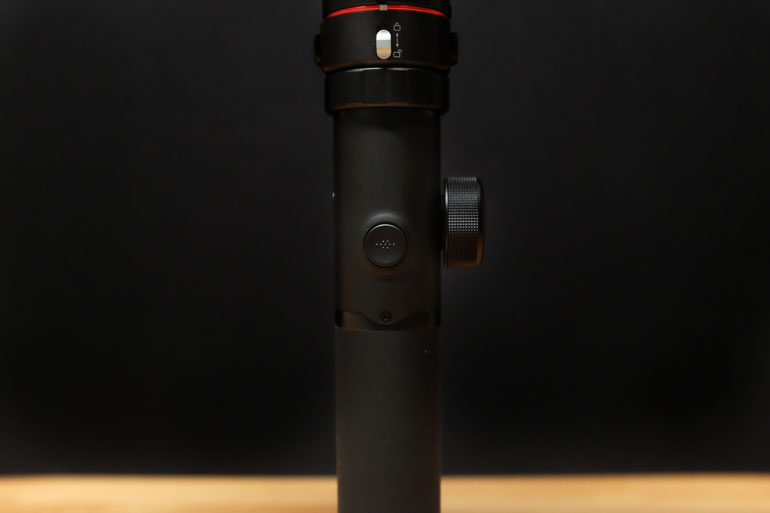
Now as a test I did go out and create a motion time-lapse, but I used the EOS R’s built-in time-lapse feature, and that worked out ok. It would snap a photo every couple seconds as I walked along a path for a few minutes.
I can see this being a nice addition to your arsenal of tools - locking all the gimbal axis and walking along in a straight or curved line while the camera captures photos automatically, and then stitching it together for a cool motion time-lapse effect. In the past I’ve done this using a camera on a fixed monopod and just taking a photo every couple steps, but using a gimbal would be an easier method if you don’t get tired holding it up for a long time.
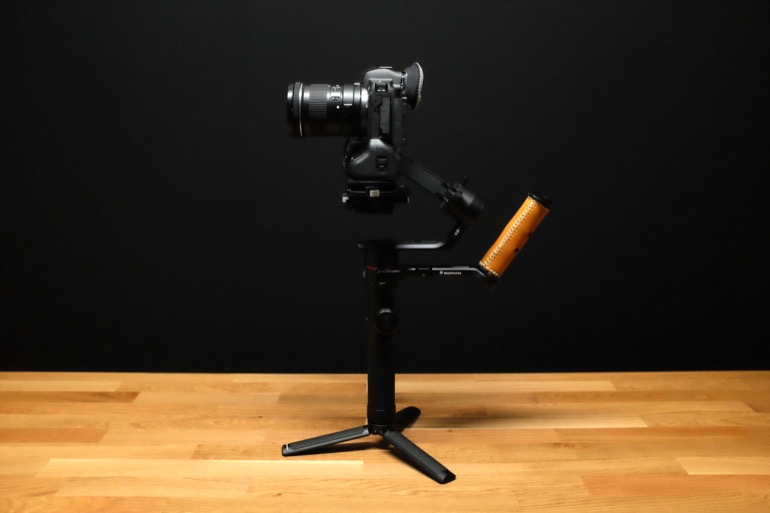
So what else? Manfrotto includes a handle that you can attach to the gimbal, which does help when you’re shooting to take the weight off of one hand. But alternatively you can also remove the tripod and screw it into the handle, which allows you to easily go into briefcase mode or for shots where you’re moving the camera from low to high or vice versa.
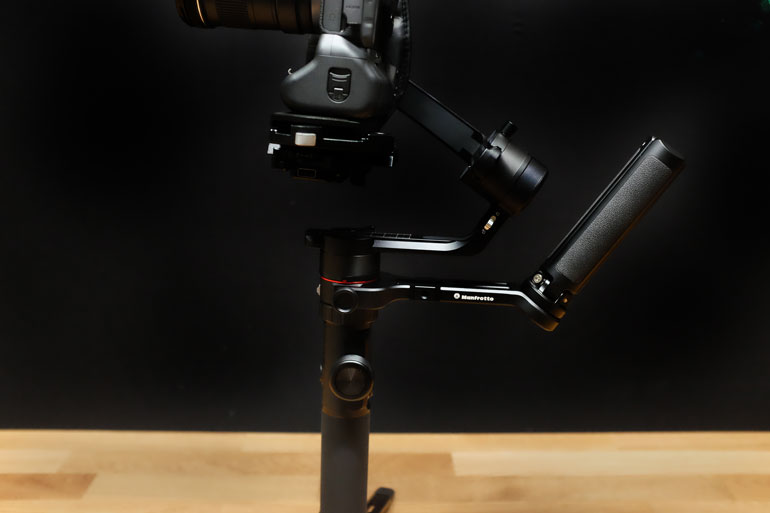
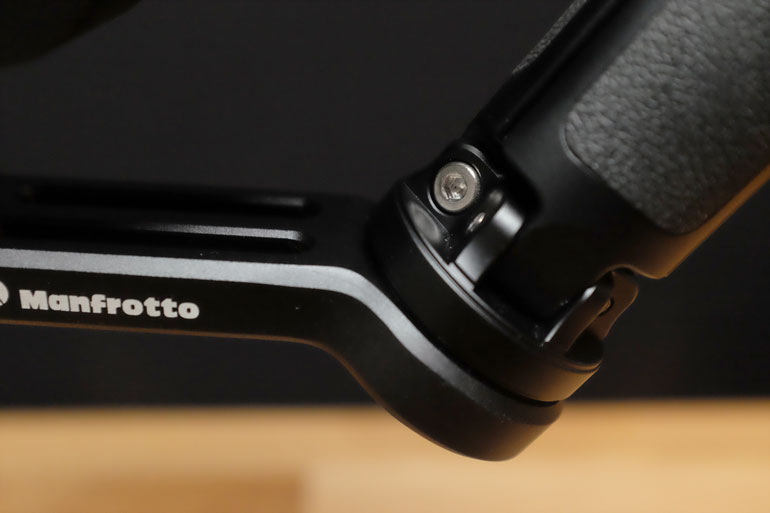
The ability to tighten the handle is very useful.
It uses a common 1/4-20 thread, so you can actually use any handle you may have lying around, and keep the included tripod on the gimbal base. I like that it’s flexible and modular and you can add accessories to your heart’s desire, like a side handle, monitor, microphone, and so on, without affecting the camera’s balance on the motors.

So in general, the Manfrotto 460 has everything going for it that you would find in other gimbals, along with the benefit of a bigger payload. But while using this gimbal I found a couple flaws that could be a deal breaker.
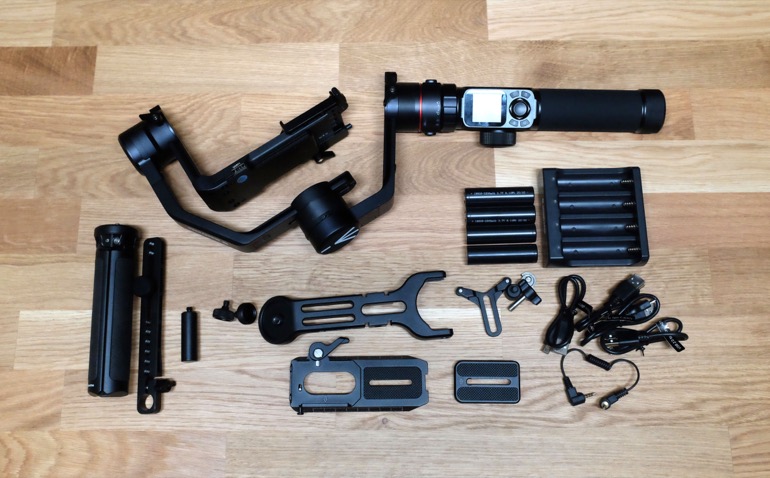
First, as soon as I got my camera balanced and turned it on, I noticed a slight drift in the pan axis. It would pan slowly to the left. It’s not a terribly big issue, since most of the time you’ll be holding the gimbal and the pan axis will be moving around left and right, but when I tried the motion time-lapse example, or when I tried to make a long push-in shot along a path, I found the pan drift frustrating.
So a solution would be to double check to make sure the camera is balanced - check - and then to go in and adjust the motor strength. Maybe the pan motor is not providing enough power to keep this heavy camera in place. You can adjust this directly in the gimbal options using the LCD screen, or you can download the Manfrotto gimbal app. Either way, you can adjust the power of each motor individually. Or you can let the gimbal automatically tune its motor strength.

Unless you’re T-Payne, you should absolutely avoid auto tune. The gimbal over estimates the required power output to the motors and the gimbal will begin to sound like a David Lynch movie while your camera shakes as if it’s been possessed by the devil. You’ll have to go in and reset the gimbal to make the pain go away, but the trauma will never leave you.
So anyway, modifying the motor strength individually helps to reduce the drift a little, but it’s still bothersome. I also tried to calibrate the gimbal but it didn’t change anything for me - maybe I’m doing something wrong, I don’t know. Manfrotto’s instructions say to lay the gimbal and camera down in a forward direction, and then start the Calibration process. I did this a few times and it didn’t seem to change anything, so who knows.

And now for the major annoying flaw with the Manfrotto gimbal, the horizontal level adjustment. Now on any gimbal you might be lucky with your camera and get a perfectly horizontal level right away and you’ll never have to monkey with it ever again.
But for the rest of us, a horizontal level adjustment may be necessary. In my case, as soon as I turned the camera on I noticed the level was a bit off, so I went into the app and used the handy horizontal level adjustment tool and bam, all fixed and ready to go.

But the settings don’t seem to save. As soon as you leave the horizontal level tab, and go back in, the settings appear to be zero’d out. You can keep shooting with the settings working the way they should, but as soon as you turn off the gimbal and turn it back on, you’ve gotta start over again with the app.
With some gimbals you can adjust the horizontal level by grabbing the camera and holding it for a couple seconds, essentially giving the roll motor a new horizontal level to maintain. It’s a quick fix in the field when you’ve been running around or shooting from a car and the gimbal just needs a push in the right direction.
Sadly with the Manfrotto 460 gimbal, you *can grab and hold the pan and tilt axis to set their place, but the roll motor doesn’t respond to your manhandling. So you’re stuck with having to adjust the level in the app every time you want to use the gimbal.
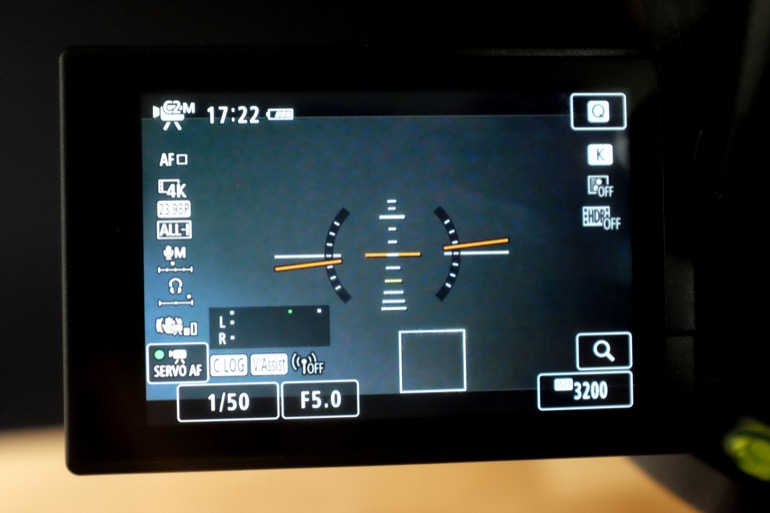
I will say, maybe this is my particular model, or my camera setup, and maybe Manfrotto will have a firmware update. There are a few reviews out there and no one else seems to mention the level issue, so who knows. Maybe I’m just not smart enough.
Alright just a few extra things I want to mention. Manfrotto has also released something called a Fast GimBoom, which is essentially a carbon fiber pole that you can pair with the Manfrotto gimbal. It’s very lightweight but has a 14 pound payload at its maximum length.

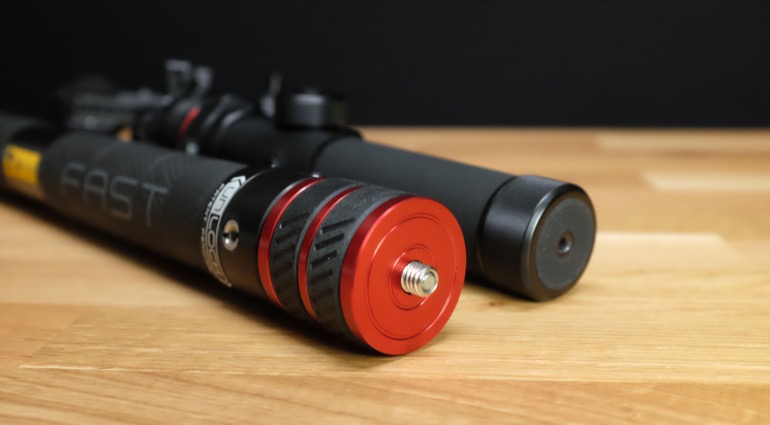
With just two twists you can extend the pole up to 4 feet, which makes it possible to create long jib-like shots or wide sweeping room movements. And actually it’s just a nice tool to have, since the 1/4-20 and 3/8 threads are universal and can be used for a variety of needs, like extending an audio boom pole.
Manfrotto has also released a follow focus that makes it easier to control your camera’s focus using the integrated knob on the side of the Manfrotto gimbal. It’s a very affordable accessory and I think could be useful if you’re doing complex movements or using a camera and lens combo that depends on manual focus.
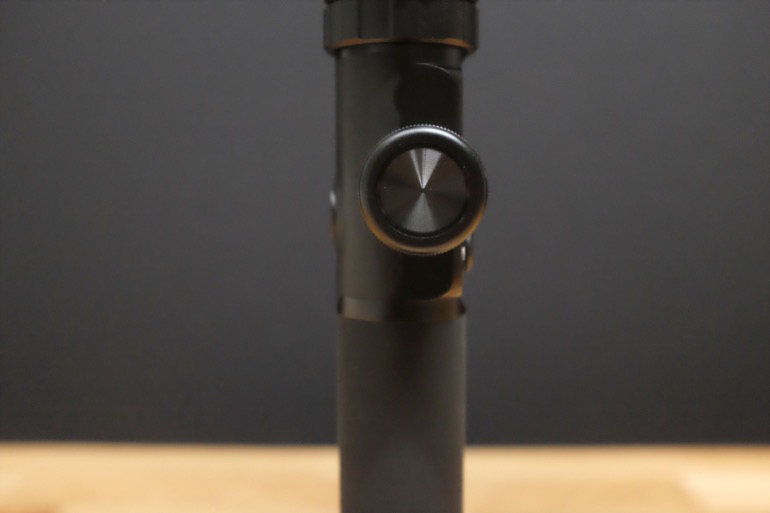
And finally, if you really want to get sophisticated with your gimbal shots, Manfrotto has a remote control that’s made specifically for the 220 and 460 gimbals. You can remotely control the gimbal movements, as well as the camera’s focus, and if your camera is compatible, you can also control the shooting and recording functions.
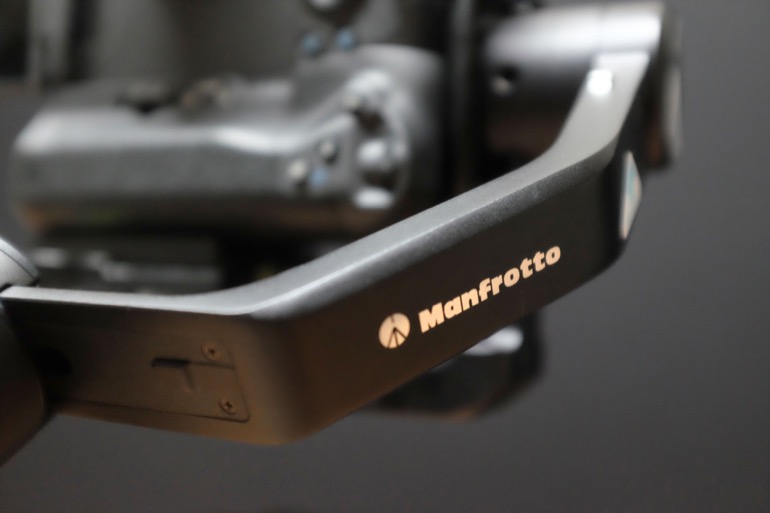
Those are amazing features that give you a lot of bang for the buck, considering that the 460 gimbal plus follow focus plus remote control plus the fast gimboom pole all together cost the same as just the DJI RS2 alone.
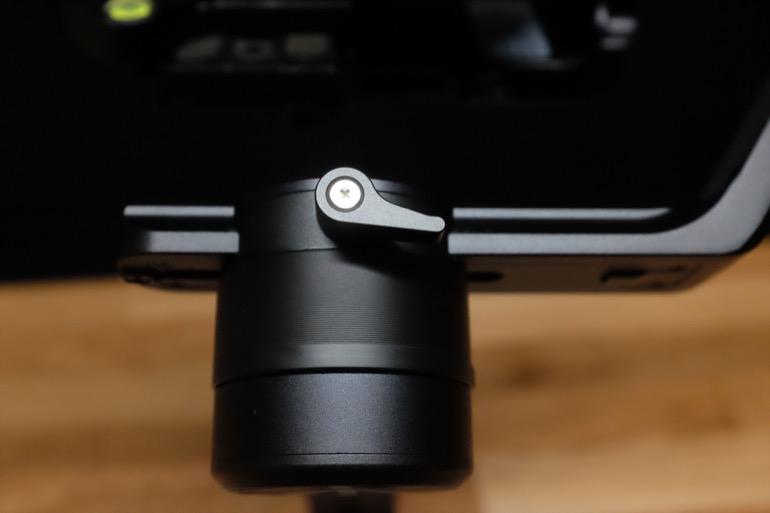
I think Manfrotto has made a great entry into the gimbal market and for the most part I’m impressed with the whole 460 kit. The build quality is good, all the necessary accessories are included, the ease of use, the follow modes, and the app are all fairly intuitive. I just hope that Manfrotto can fix the leveling issue so that the app can maintain the level adjustment just like it maintains all the other settings.
Manfrotto 460 at Amazon - https://amzn.to/30PrQIU
**Manfrotto 460 at B &H **- https://bhpho.to/3pclkFi
Manfrotto 460 Pro Kit at Amazon - https://amzn.to/3FjI8Zq
Manfrotto 460 Pro Kit at B &H - https://bhpho.to/3ecyJai
Manfrotto Gimbal Stabilizers - manfrotto.com/us-en/products/gimbal-stabilizers/
